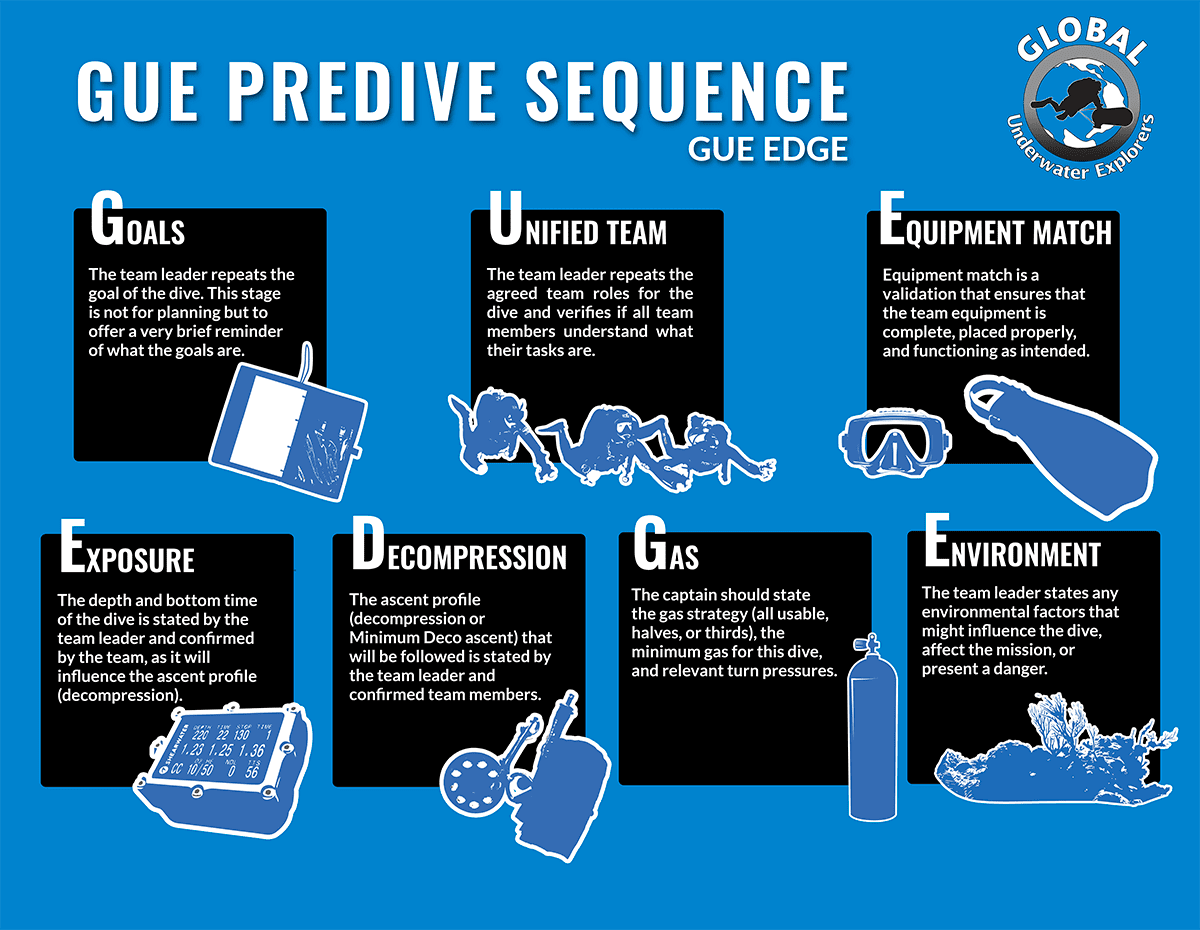Pre-Dive Checks: How to Ensure Gear & Buddy Readiness

Why Pre-Dive Checks Matter
A proper pre-dive check prevents gear-related failures before they happen. Whether you’re diving with a buddy or solo, running through a structured check ensures your air, equipment, and weight system are set up correctly before entering the water.
Several pre-dive check models exist, but they all aim to accomplish the same goal: verifying gear, gas, and buddy readiness. Below are the most common methods.
Standard Pre-Dive Check Models
BWARF (Used by Most Agencies, but Rarely in Practice)
- Buoyancy (BCD) – Is it set up and working?
- Weights – Are they installed and secured?
- Air – Is the tank on? Regulators working? PSI expected?
- Releases – Do you know how to remove your buddy’s gear in an emergency?
- Final OK – Confirm readiness.
ABCDE (Similar Concept, Different Order)
- Air – Tank on, regs working, PSI checked?
- BCD – Inflation/deflation, releases secured?
- Computer – Turned on and set correctly?
- Dive Equipment – Fins, mask, other gear?
- Enter the Water – Ready to go?
GUE-EDGE: A More Effective Pre-Dive Check

GUE-trained divers follow a more thorough team-based approach:
- Goals – What is the objective of the dive?
- Unified Team – Roles and formation.
- Equipment – Check each diver’s full gear.
- Exposure – Expected depth and time.
- Decompression – Plan for ascent.
- Gas – Minimum and usable gas strategies.
- Environment – Hazards, conditions, visibility.
This method is more extensive than what most recreational divers want, but it is excellent for all divers and the method I prefer.
For a deeper dive into GUE-EDGE, check out our detailed breakdown: GUE-EDGE Dive Planning.
Looking for a More Practical Buddy Check?
Many divers find BWARF and ABCDE too simplistic and GUE-EDGE too complex for recreational diving. If you're looking for a more effective pre-dive check that balances thoroughness with efficiency, check out the method I use with insta-buddies:
Common Mistakes to Avoid
- Forgetting to turn on the air until just before descent.
- Not verifying SPG movement when breathing off the regulators.
- Skipping weight checks—especially integrated weight pockets.
- Rushing through the process without actually confirming each step.
Final Thoughts: Pre-Dive Checks Save Dives
Pre-dive checks reduce risk and improve safety. Whichever method you choose, the key is to perform the check properly every time.
If you want to refine your weighting and trim, see our guides on Buoyancy & Weighting and Balanced Rig.
Master Your Buoyancy
Learn how to calculate your correct weighting and control buoyancy underwater.
Learn MoreLearn to Set Up a Balanced Rig
Understand how to distribute your weight for maximum efficiency.
Learn More